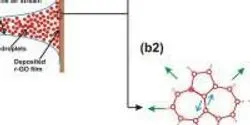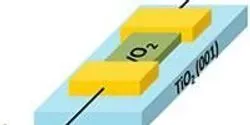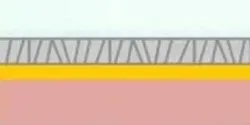Materials Science

A simple, inexpensive spray method that deposits a graphene film can heal manufacturing defects and produce a high-quality graphene layer on a range of substrates, report researchers at the University of Illinois at Chicago and Korea University.

Ferroelectric materials–substances in which there is a slight and reversible shift of positive and negative charges–have surfaces that are coated with electrical charges like roads covered in snow. Accumulations can obscure lane markings, making everyone unsure which direction traffic ought to flow; in the case of ferroelectrics, these accumulations are other charges that “screen” the true polarization of different regions of the material.

In the wake of recent off-shore oil spills, and with the growing popularity of “fracking” — in which water is used to release oil and gas from shale — there’s a need for easy, quick ways to separate oil and water. Now, scientists have developed coatings that can do just that. Their report on the materials, which also could stop surfaces from getting foggy and dirty, appears in the American Chemical Society's ACS Applied Materials & Interfaces.

A simple new technique to form interlocking beads of water in ambient conditions could prove valuable for applications in biological sensing, membrane research and harvesting water from fog.

This gift from science just keeps on giving. Measurements taken at the National Institute of Standards and Technology (NIST) show why a material already known to be good at separating components of natural gas also can do something trickier: help convert one chemical to another, a process called catalysis. The discovery is a rare example of a laboratory-made material easily performing a task that biology usually requires a complex series of steps to accomplish.

Current computing is based on binary logic – zeroes and ones – also called Boolean computing. A new type of computing architecture that stores information in the frequencies and phases of periodic signals could work more like the human brain to do computing using a fraction of the energy of today's computers.

Looking at a smooth sheet of plastic in one University of Illinois laboratory, no one would guess that an impact had recently blasted a hole through it.

The editors of Lab Manager are pleased to offer an interactive discussion with industry professionals to assist you in evaluating the relative strengths and weaknesses of the available techniques and introduce you to the latest in instrumentation innovations for elemental analysis
Available on Demand












